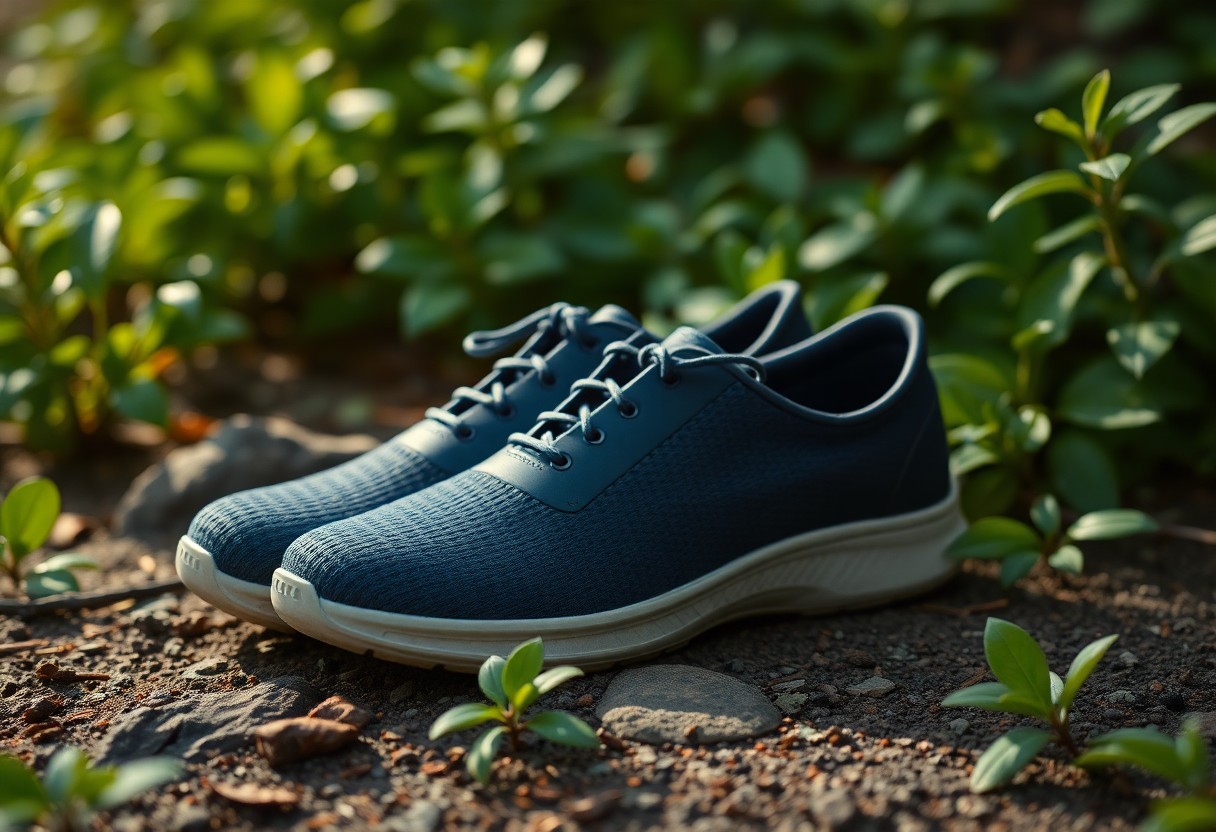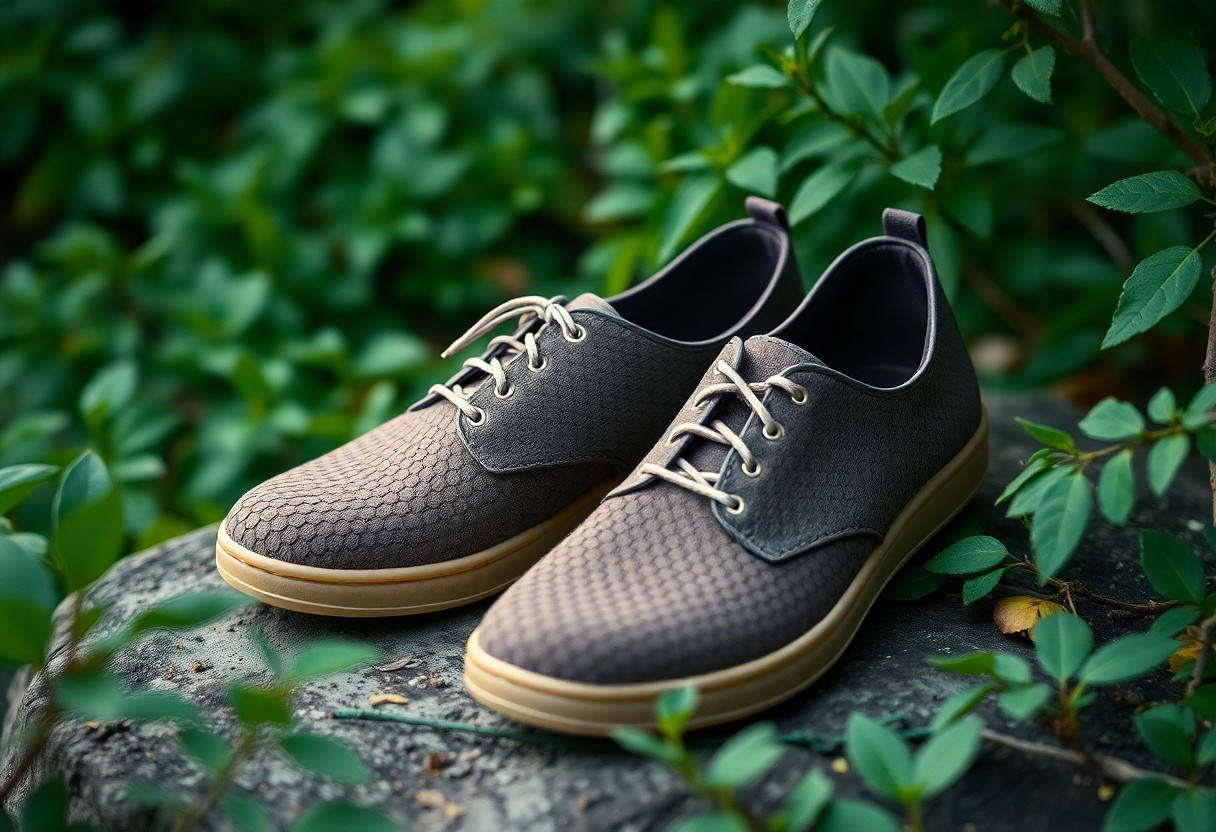As the demand for footwear that embodies personal values—such as being minimalist, functional, and environmentally sustainable—continues to rise, Xero Shoes has established itself as a prominent brand in the market. These innovative shoes merge barefoot flexibility with eco-friendly materials, such as recycled soles and plant-based dyes. This raises an important question: how sustainable are they in practice? Xero Shoes offers carbon-neutral shipping and long-lasting designs with the goal of reducing waste; however, certain synthetic materials pose challenges. By choosing Xero Shoes, you are making a commitment to sustainability while being conscious of your environmental impact, albeit with some trade-offs. If you’re seeking footwear that prioritizes eco-friendly practices, here are essential insights you should explore.
Unlock the Advantages of Eco-Conscious Footwear
In contrast to conventional shoes that frequently rely on synthetic materials and environmentally damaging production methods, eco-friendly footwear is crafted with sustainability at the forefront of every development phase. These innovative shoes utilize recycled, biodegradable, or plant-based materials, significantly decreasing waste and carbon emissions. For those who embrace barefoot movement, brands like Xero Shoes seamlessly incorporate this philosophy with minimalist designs, allowing you to tread lightly on our planet—akin to walking with a reduced footprint, both physically and environmentally.
Diving into the Concept of Eco-Friendly Footwear
At its essence, eco-friendly footwear denotes shoes constructed from sustainable materials such as organic cotton and natural rubber, all while adhering to ethical manufacturing practices. These shoes consciously avoid harmful dyes, excessive packaging, and non-recyclable components, ensuring that your purchasing choices contribute to healthier ecosystems and equitable labor standards. Understanding this concept is vital as it’s not just about the shoes you wear, but also about the production processes that bring them to life.
Exploring the Rising Trend of Minimalist Shoe Designs
Minimalist designs, particularly barefoot shoes, have surged in popularity as an alternative to traditional cushioned footwear due to their natural feel and environmental advantages. By significantly reducing excess material, these shoes lower waste and energy consumption, perfectly encapsulating the belief that “less is more.” This trend is evident in brands like Xero Shoes, which utilize thin, durable soles and lightweight fabrics, thus minimizing resource use. This evolution reflects a growing awareness that streamlined designs can effectively reduce your carbon footprint without compromising functionality.
For instance, Xero Shoes employs lightweight materials and advanced techniques to produce footwear that not only feels comfortable but also honors the environment. This thoughtful approach resonates with individuals who prioritize sustainability as part of their lifestyle choices.
The Essential Importance of Sustainable Practices in the Footwear Industry
The footwear production process is a significant contributor to pollution and landfill waste, with billions of pairs discarded each year. Implementing sustainable practices, such as utilizing recycled plastics and water-based adhesives, can aid in alleviating these pressing issues. By opting for eco-friendly choices, you are endorsing innovative practices that safeguard ecosystems and minimize harm. However, it’s crucial to recognize that the stakes are high: the fast fashion industry’s dependence on synthetic materials results in the discharge of microplastics and resource depletion. Conversely, sustainable brands emphasize longevity and circularity, ensuring your footwear does not exacerbate this ongoing challenge.
Investigating Sustainable Materials Utilized in Xero Shoes
If you are in pursuit of eco-friendly barefoot shoes, Xero Shoes prioritizes sustainability through the utilization of recycled PET and hemp, effectively reducing waste and environmental impact. Their dedication to green alternatives ensures that your footwear aligns with your values—like walking with a lighter footprint both literally and environmentally.
Eco-Conscious Recycled PET Laces
Sustainable practices can begin with small choices, and Xero Shoes’ laces, made from 100% recycled PET, repurpose plastic waste into durable, functional components. By selecting these laces, you help divert plastic from landfills while enjoying lasting performance, thereby contributing to a cleaner planet.
Advantages of Hemp Uppers in Footwear
The environmental benefits of using hemp for Xero Shoes’ uppers are substantial. Hemp is a low-water, pesticide-free crop recognized for its ability to regenerate soil health. Its natural breathability and strength make it an ideal choice for barefoot shoes, providing comfort without harming the Earth. By choosing hemp, you are supporting a cleaner future due to its rapid growth and carbon-sequestering capabilities. Unlike synthetic fabrics, hemp biodegrades naturally, reducing long-term waste accumulation. Additionally, its antimicrobial properties help maintain freshness in your shoes for extended periods.
When comparing hemp to traditional materials:
| Hemp |
Requires 50% less water than cotton |
| Synthetics |
Derived from fossil fuels, non-biodegradable |
Evaluating the Environmental Impact of Minimalist Footwear Design
Xero Shoes’ minimalist designs not only reduce material waste but also lower your carbon footprint by requiring fewer resources during production. The streamlined design process ensures that less energy is consumed in manufacturing, while the absence of unnecessary padding or synthetic layers significantly diminishes landfill contributions. Choosing minimalist footwear champions a design philosophy that prioritizes efficiency and sustainability, akin to walking with a lighter footprint in both a literal and environmental sense.
Utilizing Lightweight Materials for Enhanced Sustainability
The environmental benefits of Xero Shoes are evident through their lightweight, low-impact materials, including recycled rubber soles and vegan-friendly fabrics. These choices alleviate the pressure on natural resources while providing high performance. You’ll find that these materials also contribute to reduced transportation emissions, as lighter shoes necessitate less fossil fuel during shipping, thus promoting a greener planet.
Durability of Xero Shoes for Sustainable Use
In addition to their eco-friendly materials, Xero Shoes are designed for durability, minimizing the need for frequent replacements. Their reinforced stitching and high-quality rubber outsoles are engineered to withstand wear and tear, ensuring that your shoes remain functional for years to come. This durability directly correlates to less landfill waste, making them a smart investment for sustainable living.
Indeed, the durability of Xero Shoes is underscored by a 5,000-mile sole warranty, which demonstrates their commitment to reducing environmental impact. Fewer replacements lead to lower resource consumption, and their repairable design allows you to extend the life of your shoes even further. For eco-conscious consumers, this combination of resilience and sustainability is truly transformative.
Grasping Certifications and Ethical Practices in Footwear Production
Once again, Xero Shoes exemplifies its dedication to sustainability by adhering to rigorous certifications and ethical practices. Their transparency regarding sourcing and manufacturing ensures that your barefoot shoes align with eco-friendly values. From carbon-neutral shipping to recycled materials, they prioritize minimizing environmental harm while delivering high-performance footwear. Much like walking with a lighter footprint—both literally and environmentally—their efforts reflect a sincere commitment to planet-friendly practices.
Understanding the Importance of Fair Trade Certification
By choosing Fair Trade-certified materials, Xero Shoes actively promotes ethical labor conditions and fair wages for workers. Your purchases contribute to empowering communities and fostering social equity. While not all their products bear this certification, their ongoing efforts to enhance supply chain ethics signify meaningful progress toward a more responsible future.
Recognizing PETA-Approved Vegan Certification
Impact is crucial, and Xero Shoes’ PETA-Approved Vegan certification guarantees that your footwear is 100% free of any animal-derived materials. This certification aligns with a cruelty-free lifestyle while also reducing the environmental burden associated with leather production. Their vegan options illustrate that maintaining ethical standards does not necessitate a sacrifice in performance.
Moreover, PETA’s endorsement involves not only material sourcing; it includes a thorough audit of supply chains to ensure no animal exploitation occurs. Xero Shoes’ commitment in this domain means you can trust their claims, avoiding common greenwashing pitfalls found in many brands. For environmentally conscious consumers, this certification adds an extra layer of assurance regarding your sustainable choices.

Case Study: Real-Life Experiences with Sustainable Footwear
Many barefoot shoe enthusiasts have expressed how Xero Shoes resonate with their eco-conscious values, appreciating the brand’s minimalist design and sustainable materials. Whether focusing on waste reduction or opting for vegan-friendly choices, users highlight how these decisions reflect their commitment to a greener lifestyle—like walking with a lighter footprint, both literally and environmentally.
Evaluating Lifecycle Impact of Footwear
Xero Shoes aims to minimize environmental harm at every stage of their product lifecycle, from production to eventual disposal. Their durable construction enhances wearability, while recyclable components assist in diminishing landfill contributions. You will discover that their lifecycle approach balances performance with planet-friendly practices.
Insights from Sustainability Advocates
Feedback from eco-conscious wearers reveals robust support for Xero Shoes’ transparency and ethical sourcing. Advocates underscore the brand’s initiatives, such as employing recycled materials, which resonate deeply with their personal sustainability objectives.
Upon further analysis of these testimonials, it becomes clear that durability and low-carbon manufacturing are frequently cited as standout attributes. Nevertheless, some advocates suggest there is potential for improvement in end-of-life recycling programs, urging the brand to further innovate in circular practices.

The Influence of Consumer Choices on Sustainability Practices
Sustainable habits commence with your actions. Your decisions as a consumer shape market demand, influence brands, and propel the shift to eco-friendly practices. By selecting products like Xero Shoes, you support companies that emphasize minimal waste and ethical sourcing, demonstrating that even small choices can lead to significant change.
Environmental Impacts of Your Purchasing Decisions
Before making a purchase, reflect on your environmental footprint. Each transaction generates ripple effects—from resource extraction to landfill waste. Choosing barefoot shoes made from recycled materials or biodegradable components can significantly diminish your impact, reinforcing the concept of walking with a lighter footprint—both literally and environmentally.
The Necessity of Consumer Education and Awareness
Understanding the lifecycle of your footwear is integral. The more knowledgeable you are, the better your choices become. Brands like Xero Shoes openly disclose their processes, aiding you in avoiding greenwashing and aligning with authentic sustainability.
Consumer awareness extends beyond superficial labels. By researching materials, labor conditions, and carbon footprints, you empower yourself to make informed decisions. Ignorance propels unsustainable practices, while knowledge cultivates accountability and progress in sustainable consumerism.
The Growing Demand for Sustainable Footwear Options
The increasing interest in eco-friendly footwear signifies a broader cultural shift. As more individuals prioritize sustainability, brands are responding with innovations like plant-based soles and zero-waste packaging, demonstrating that your consumer choices can initiate meaningful change within the market.
Your behaviors influence market dynamics. Your preference for sustainable alternatives pressures competitors to adapt or risk obsolescence. Fast fashion and synthetic materials are declining as conscious consumers advocate for alternatives, progressively fostering a healthier planet.
The Financial Considerations of Sustainable Footwear Choices
Opting for eco-friendly barefoot shoes, such as those from Xero Shoes, reflects a growing trend towards sustainable consumerism. While these shoes may involve a higher initial cost compared to traditional options, their durability and minimal environmental impact often justify the investment. By supporting brands that prioritize ethical materials and production, you contribute to a circular economy that reduces waste and promotes fair labor conditions. Like walking with a lighter footprint—both literally and environmentally—your purchase aligns with values that benefit both the planet and future generations.
Cost Implications for Consumers
Among the factors influencing your decision, the upfront price of sustainable barefoot shoes may be higher than mass-produced alternatives. However, their extended lifespan and repairability frequently counterbalance this cost over time. Brands like Xero Shoes focus on quality materials, leading to fewer replacements and reduced waste. While the initial price may give you pause, the value-per-wear makes them a logical financial choice for eco-conscious consumers.
Long-Term Benefits of Investing in Eco-Conscious Products
Beyond lowering your carbon footprint, eco-friendly barefoot shoes also provide health and financial benefits. Their natural designs promote better posture and foot strength, potentially decreasing medical expenses associated with inadequate footwear. By choosing sustainable options, you are also encouraging innovation in green materials, driving transformative change across the industry.
For example, Xero Shoes employs recycled and vegan materials that minimize resource depletion and pollution. Over time, your investment in these products helps normalize sustainable practices, motivating more brands to adopt eco-conscious methods. This ripple effect can lead to broader environmental benefits, including reduced landfill waste and lower carbon emissions.
Current Market Trends and Future Forecasts
Globally, the demand for sustainable footwear is on the rise, with barefoot shoes capturing the attention of health- and eco-conscious consumers. Brands like Xero Shoes are at the forefront, utilizing biodegradable and recycled materials to meet this burgeoning demand. As awareness increases, we can anticipate competitive pricing, making eco-friendly options more accessible to a larger audience.
Trends indicate a shift towards transparency, with consumers demanding comprehensive information about ethical sourcing and production practices. This push for accountability is reshaping the industry, although challenges such as greenwashing persist. By staying informed, you can make choices that align with sustainability goals, ensuring your purchases drive impactful change.
Overcoming Challenges in Sustainable Footwear Production
Despite the rising demand for eco-friendly footwear, producing sustainable barefoot shoes like Xero Shoes presents various challenges. The limited availability of certified materials, high production costs, and the need for durable yet biodegradable designs complicate the process. You might wonder if these obstacles affect sustainability—fortunately, brands committed to innovation are continuously discovering solutions that ensure your shoes align with your values.
Challenges in Sourcing Eco-Friendly Materials
One significant hurdle is sourcing ethically produced, eco-friendly materials. Every component must comply with stringent environmental regulations, from recycled rubber soles to plant-based dyes. You will appreciate that Xero Shoes prioritizes suppliers who uphold transparent practices; however, scaling these responsibly remains a significant obstacle for the industry.
Balancing Cost with Quality in Production
Behind every sustainable shoe lies a complex equation: affordability versus durability. Eco-materials typically incur a higher cost, yet cutting corners can compromise longevity—something you certainly won’t accept in footwear designed for long-term use. Brands must navigate this balance without shifting the entire burden onto the conscious consumer.
Challenges arise when budget-friendly alternatives compromise sustainability. For instance, cheaper synthetic options may lower prices but undermine biodegradability. Xero Shoes tackles this challenge by optimizing production efficiency, demonstrating that ethical choices do not always lead to exorbitant costs.
The Industry’s Resistance to Change
A significant barrier is the footwear industry’s reluctance to abandon fast-fashion models. Traditional manufacturers often prioritize profit over ecological responsibility, making it difficult for sustainable brands to thrive. Your support for eco-friendly companies like Xero Shoes is crucial for sparking systemic change.
Progress may appear slow due to entrenched practices and lobbying against eco-regulations, but consumer demand—driven by your choices—is pushing brands towards greater transparency. Change is happening, but it requires ongoing advocacy from consumers who prioritize sustainability over convenience.
Innovations in Eco-Conscious Footwear Technology
Stay ahead in sustainability with Xero Shoes’ groundbreaking advancements in eco-friendly footwear. Their innovations prioritize minimizing environmental impact while ensuring top-notch performance, combining comfort with eco-conscious design. From recycled materials to low-waste production techniques, these shoes allow you to walk with a lighter footprint—both literally and environmentally.
Enhancements in Sustainable Material Use
Xero Shoes incorporates recycled polyester, hemp, and plant-based dyes to reduce the ecological damage associated with traditional fabrics and modern eco-friendly alternatives. These materials decrease water usage and carbon emissions, providing you with durable footwear that respects the planet.
Biodegradable Components for Sustainable Living
Leading the way in sustainability, Xero Shoes integrates plant-based outsoles and natural rubber, which decompose faster than synthetic alternatives. This strategy effectively diminishes long-term waste, aligning your footwear choices with the principles of a circular economy.
Innovations in biodegradable technology ensure these components break down efficiently, leaving minimal environmental traces. By choosing shoes with these features, you actively contribute to alleviating landfill burdens and reducing microplastic pollution.
Fusing Technology with Sustainability
At the intersection of innovation and ecology, Xero Shoes employs 3D printing and precision engineering to minimize material waste. Their processes emphasize efficiency, ensuring that every step you take is grounded in sustainable technology.
Sustainability is not just a buzzword; it is woven into their operational ethos. From solar-powered production facilities to carbon-neutral shipping, Xero Shoes exemplifies how high-performance footwear can harmonize with environmentally friendly practices, empowering you to make a difference with every purchase.
Comparative Analysis of Xero Shoes and Competing Brands
When comparing Xero Shoes to other eco-friendly barefoot brands, you will notice distinct differences in materials, durability, and sustainability approaches. Here’s a concise overview:
Comparison of Xero Shoes and Competitors
| Xero Shoes |
Utilizes recycled materials, offers vegan options, and emphasizes minimalist design. |
| Competitors (e.g., Vivobarefoot, Merrell) |
Provide similar eco-claims but may lack transparency in sourcing and durability. |
Overview of Comparable Eco-Friendly Brands
Upon examining the market, brands such as Vivobarefoot, Merrell, and Freet prioritize sustainability in their offerings. Here’s how they compare:
Eco-Friendly Barefoot Shoe Brands
| Vivobarefoot |
Offers wildhide leather and recycled materials, albeit at a premium price. |
| Merrell |
Combines eco-materials with traditional materials, achieving a balance between cost and sustainability. |
Assessing the Strengths and Weaknesses of Each Brand
To determine which brand aligns with your needs, consider their pros and cons. Xero Shoes excels in affordability and transparency, while Vivobarefoot offers premium materials at a higher cost. Merrell may compromise full sustainability in favor of durability.
In summary, each brand has its trade-offs. Xero’s commitment to vegan and recycled materials is commendable, but some users have reported thinner soles compared to Vivobarefoot’s more robust offerings. Merrell’s hybrid approach appeals to those seeking a middle ground, but might not fully satisfy purists.
Strategic Positioning of Xero Shoes in the Market
While Xero Shoes may not be as recognized as its competitors, it has carved out a niche by balancing eco-consciousness with affordability. Though not as widely acknowledged as Vivobarefoot, its devoted customer base appreciates its minimalist principles and sustainable practices.
Furthermore, Xero’s direct-to-consumer model helps maintain competitive pricing, although its limited retail presence may dissuade some potential buyers. Their commitment to a transparent supply chain and carbon-neutral initiatives makes them an attractive choice for eco-conscious consumers, even amidst ongoing discussions about durability.
Community Engagement and Environmental Initiatives by Xero Shoes
Xero Shoes goes beyond the conventional role of a footwear brand by actively fostering eco-conscious values. They engage in initiatives that resonate with their sustainability mission, ranging from waste reduction efforts to supporting various environmental causes. By prioritizing transparency, they encourage you to be part of their journey toward a greener future—akin to walking with a lighter footprint both literally and environmentally.
Xero Shoes’ Participation in Environmental Programs
While any brand can profess sustainability, Xero Shoes substantiates it with concrete actions. They collaborate with programs like 1% for the Planet, donating a portion of their sales to environmental nonprofits. Their dedication to reducing carbon emissions and utilizing recycled materials showcases their earnest intent to lessen their ecological footprint—allowing you to feel good about your purchase.
Building a Community Focused on Sustainability
Any movement towards eco-friendliness thrives on shared values, and Xero Shoes cultivates this connection among like-minded individuals. Through social media, events, and educational content, they empower you to make informed choices, transforming customers into advocates for sustainable living.
Moreover, Xero Shoes frequently organizes challenges and workshops that promote deeper engagement, reinforcing that sustainability is not merely a trend—it’s a lifestyle. By nurturing this community, they amplify the impact of every small step taken towards greener practices.
Inviting Active Consumer Participation in Sustainability
The brand goes beyond merely advocating for sustainability; it invites you to become part of the solution. From recycling old shoes to sharing tips on reducing waste, Xero Shoes provides the necessary tools to help you effortlessly lessen your environmental footprint.
Environmental responsibility starts with awareness, and Xero Shoes simplifies this process. Their #XeroImpact campaign encourages you to share your eco-friendly journey, creating a ripple effect that inspires others. When you choose Xero, you are not just buying shoes; you are joining a larger movement.

Addressing Common Questions About Sustainable Footwear
You may be curious about the authenticity of sustainability claims in barefoot shoes. Xero Shoes emphasizes eco-friendly practices, utilizing recycled rubber and vegan-friendly options. Their commitment to durability leads to fewer replacements, thus minimizing waste. However, it is essential to remember that no brand is perfect—be sure to check their transparency reports for comprehensive impact details.
Frequently Asked Questions About Eco-Friendly Materials
Your primary question might be: “Are these materials truly sustainable?” Xero Shoes employs plant-based dyes, recycled soles, and breathable meshes. While synthetic blends are present, their focus on low-impact production helps mitigate carbon footprints—like walking with a lighter footprint, both literally and environmentally.
Dispelling Myths About Minimalist Footwear
Given the ongoing discussions, you may encounter assertions like “barefoot shoes lack support.” In reality, they are engineered to strengthen your feet naturally. Misconceptions about discomfort often arise from inadequate transition periods—your body needs time to adjust to the change.
Thus, minimalist shoes are not merely a trend, but a healthier alternative when utilized correctly. Studies suggest improved posture and reduced joint stress, but rushing into wearing them may lead to strain. It’s crucial to heed your body’s signals and transition gradually.
The Importance of Product Certifications in Sustainable Practices
For material safety, seek out certifications like Bluesign® or OEKO-TEX®, which assure the absence of toxic, responsibly sourced materials. Xero Shoes’ adherence to these standards signifies a trustworthy commitment, but always verify claims—greenwashing remains prevalent.
Certifications are more than just labels; they serve as your protection against harmful practices. Opt for brands that undergo third-party audits, as these validate genuine dedication to sustainability rather than mere marketing hype.
Imagining the Future of Sustainable Footwear
In the footwear industry, sustainability has evolved from a niche trend to a crucial standard. Brands like Xero Shoes are leading the way with minimalist designs and eco-friendly materials, proving that comfort and ecological responsibility can coexist. The future promises further innovations in biodegradable soles, recycled fabrics, and carbon-neutral production, all contributing to a reduction in your environmental impact—like walking with a lighter footprint, both literally and environmentally.
Trends Propelling Eco-Friendly Innovations
To meet the growing demand, brands are embracing circular economy principles, including shoe recycling initiatives and plant-based materials. Advances in 3D knitting and algae-based foams are designed to minimize waste, while supply chain transparency ensures that you are informed about your purchases. These trends reflect a movement toward footwear that is as kind to the Earth as it is to your feet.
Forecasts for the Footwear Sector
In the coming decade, anticipate biodegradable shoes becoming mainstream, with brands vying for the lowest carbon footprint. Customization through AI may help reduce overproduction, and vegan leather alternatives could dominate the marketplace. Your consumer choices will increasingly influence industry standards, propelling brands towards adopting greener practices.
Moreover, as regulations tighten, companies that fail to embrace sustainable methods may face consumer backlash or legal penalties. The rise of carbon labeling will empower you to make informed decisions, turning every purchase into a vote for the planet.
The Power of Consumer Activism in Driving Sustainability
Among the most influential forces driving change is your voice. Social media campaigns and boycotts have compelled brands to abandon harmful practices, while grassroots movements demand accountability. By supporting ethical brands, you are not merely purchasing shoes; you are fueling a revolution.
Eco-friendly activism has already led to bans on toxic glues and child labor in supply chains. However, greenwashing remains a concern, so staying informed is vital. Your vigilance guarantees that companies prioritize real impact over mere marketing tactics.
Final Reflections on Sustainable Footwear Choices
In conclusion, Xero Shoes presents a compelling option for eco-conscious consumers in search of barefoot footwear. Their focus on recycled materials, minimal waste, and durable designs aligns with your values of reducing environmental impact. Like walking with a lighter footprint—both literally and environmentally—their approach successfully balances performance with planet-friendly practices. While achieving perfection may be elusive, Xero Shoes is dedicated to sustainability, positioning itself as a strong contender in the barefoot shoe market. If you seek footwear that supports your active lifestyle while honoring the Earth, these shoes are certainly worth your consideration.
The Article Eco-Friendly Barefoot Shoes: How Sustainable Are Xero Shoes? appeared first on My Shoes Finder














